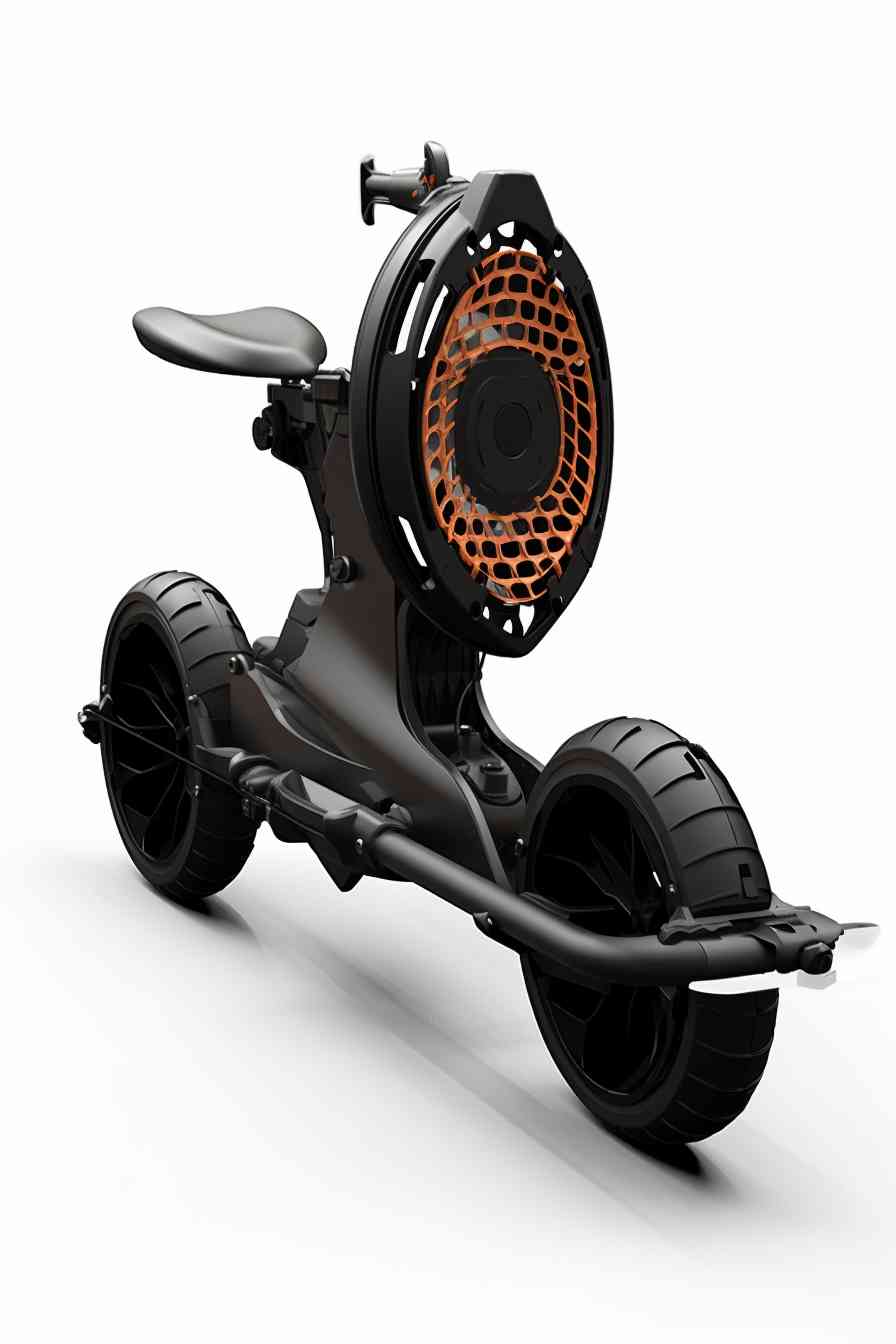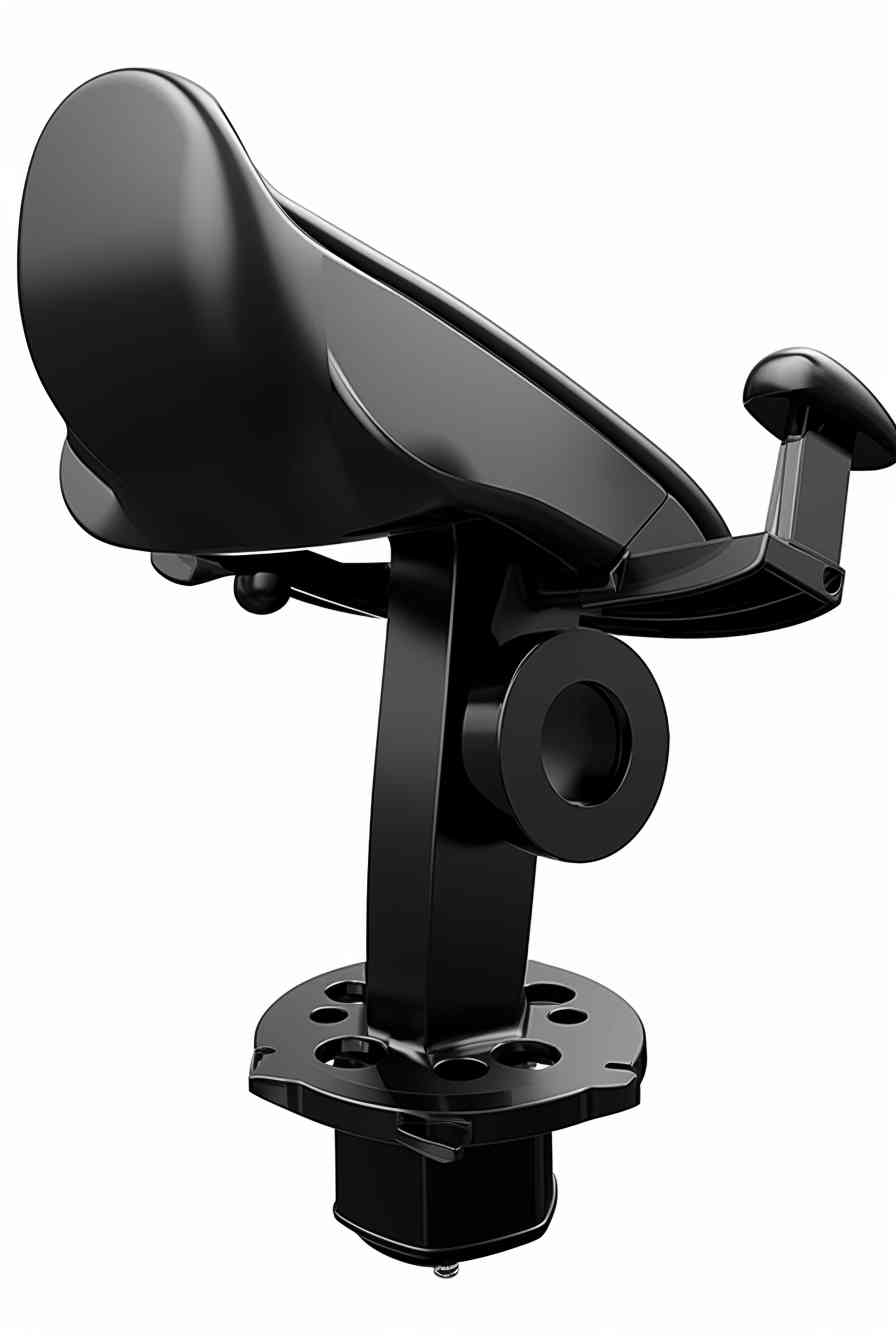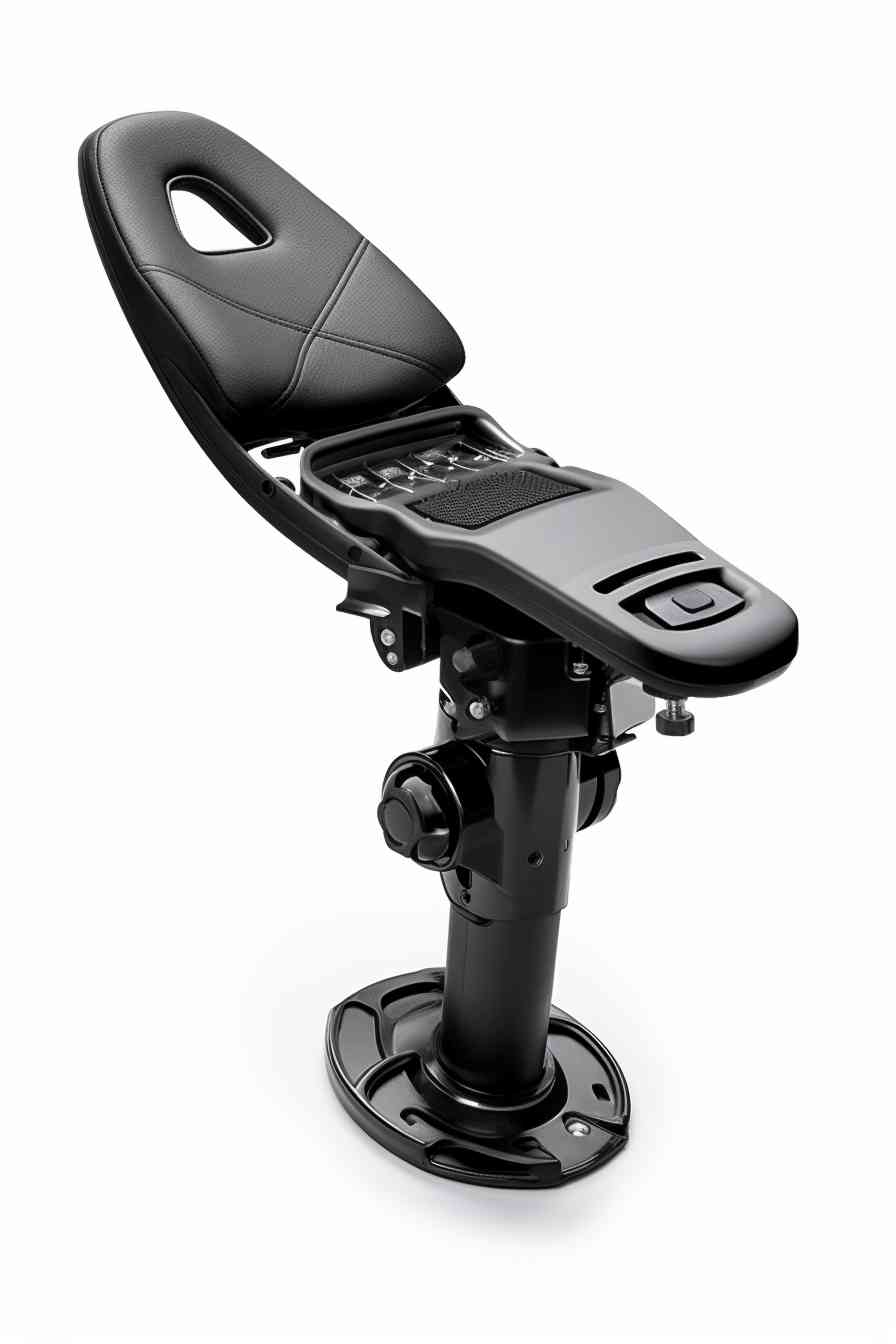Intro: Trolling Motor Mount For Kayak

So, you’re interested in adding a trolling motor mount to your kayak? Great, I’m here to help! There’s nothing quite like the ease of navigating water bodies with a trolling motor on your kayak. But first thing’s first – you gotta figure out the mount. It’s crucial to get this right to ensure smooth and efficient operation.
Now, let’s dive into understanding the trolling motor mount for kayak. So, what is it? Simply put, it’s a device for attaching a trolling motor to your kayak. Simple? Yes, but we’re getting into more specific stuff soon! It’s designed to maintain stability and balance, while ensuring that your motor remains in place, even in rough waters.
Selecting the right trolling motor mount can feel overwhelming with the plethora of options available. But don’t fret! I’ll guide you through. The first thing to consider is its compatibility with your kayak. The last thing you want is a mount that doesn’t fit. Just like a bad hat on a good day… it just doesn’t sit right!
Material and durability of the mount are also super important. You want something that can withstand harsh weather conditions and rough water – something tough as nails! Corrosion-resistant materials such as stainless steel and heavy-duty nylon are popular choices.
And don’t forget about ease of installation – you don’t want a PhD in Engineering to get that thing on your kayak. Something practical and easy to install, like a kid’s puzzle, is your best bet.
There you have it – the basics of trolling motor mount for kayaks. It’s a simple device, but it makes a world of difference to your kayaking experience. Time to navigate the waters like a pro!
Can You Mount A Trolling Motor On Any Kayak?

Sure thing, let’s delve into it! The question that keeps popping in our heads – can you mount a trolling motor on any kayak? Well, it’s a bit of a pickle, isn’t it?
From a broader perspective, yes, you can mount a trolling motor on practically any kayak. But hold your horses! It isn’t as simple as it sounds. Various factors play substantial roles here, such as the kayak’s design, its size, its capacity – you get the drift. The plot thickens when you start to consider the technicalities, like the weight of the motor and how it can balance with the kayak’s construction.
Let me put it out there, though, that over the years, I’ve seen some pretty ingenious ways folks have adapted their kayaks to accommodate a trolling motor. Some workarounds are more of a Hail Mary type, you know, rigging up a mount that defies all the rules of physics, and darned if it doesn’t actually work!
But even with such creative jaunts, you need to be a wee bit cautious. A trolling motor could make your kayak incredibly unstable if not properly balanced. So it’s critical to ensure your yak can comfortably carry the additional load, and the weight is evenly distributed.
So, to slice a long story short, while it’s possible to mount a trolling motor on any kayak, it’s essential to take into account factors like stability, weight distribution, and the kayak’s design. After all, you wouldn’t want to be up the creek without a paddle, would you?
Is It Worth Putting A Trolling Motor On A Kayak?

Well, I gotta tell you, it’s a good question. If you ask me, I’d say, oh boy, it sure is—especially if you’re looking to have a far less tiresome time paddling around. With a trolling motor, you can zip across lakes, rivers, and other water bodies without so much as breaking a sweat. It’s an absolute godsend for those long fishing trips, believe me. You just sit back, relax, and let the motor do all the heavy lifting.
Now, don’t get me wrong. There’s nothing quite like the tranquility and peace that comes with a paddle-powered ride. But let’s face it, sometimes the going gets tough—like when the tides are against you, or when you need to move swiftly to a prime fishing spot. That’s when you’d wish you had a trolling motor mounted on your kayak.
Still, a word of caution though – installing a trolling motor isn’t a decision to be made lightly. It comes with its fair share of factors to contemplate. You gotta consider the weight, balance, and even the legalities in some areas. Not to mention the cost—motors, batteries, mount, it all adds up, you know what I mean?
So is it worth it? I’d say, most assuredly, yes.But just like any major decision, weigh out the pros and cons before diving headfirst.
Are you thinking about adding a trolling motor to your kayak? Give it a go! It may just completely transform your kayaking experience. But remember, take your time to think it over, do your research, and make an informed decision. After all, it’s about enhancing your experience out in the tranquil waters. And if a trolling motor does that for you, then it’s absolutely worth it!
How Many Pounds Of Thrust Do I Need For A Kayak Trolling Motor?

Ah, the age-old question, how many pounds of thrust do I need for a kayak trolling motor? Well, let me tell ya, it’s not as complicated as it might seem! Here’s what you need to know…
Generally, a safe starting point is knowing that, typically, an electric trolling motor with 30 to 50 pounds of thrust is more than sufficient for a standard kayak. Why, you might ask? Well, it all comes down to the weight of your kayak. See, an average-sized kayak weighing around 100-150 lbs, including the paddler and the gear, can be successfully propelled by a 30-50 lbs thrust trolling motor.
However – and this is important – if your kayak weighs more, say around 500 lbs in total, you might need a bit more power. In such cases, a 55-pound thrust motor could be what you should be aiming for!
Now, please remember, we’re talkin’ about average conditions here. If you’re on rougher water or you need a faster speed, you may need a bigger motor. But for most kayakers, 30-50 pounds of thrust will do the trick!
But remember, the best advice would always be: when in doubt, go for more power. After all, it’s better to have it and not need it, than need it and not have it, right?
Remember, though, that higher thrust means greater energy consumption, so make sure to take this into account when planning your trips. You wouldn’t want to run out of battery in the middle of a lake, now – would you? Be safe out there, folks!
How Fast Will A Trolling Motor Push A Kayak?
Boy, oh boy, have I got some exciting news for you! Ever wondered how quickly a trolling motor could push a kayak? Well, I’m here to spill the beans! It might seem like a complex question — but stick with me here, it’s actually quite simple.
So, first things first, when it comes to speed, it really depends on a few factors — the power of your trolling motor, the weight of your kayak, and, of course, the conditions of the water. You see, with a trolling motor, your kayak could reach speeds of anywhere between 2 to 6 mph. Ain’t that pretty nifty?
Typically, a smaller trolling motor – oh, let’s say around 30 to 40 pounds of thrust – will generally get your boat moving at a leisurely pace of 2 to 3 mph. But hang on a second, get yourself a more powerful motor, and bam! You’re zooming across the water at a whopping 5 to 6 mph. Fancy that, eh?
But, let me tell you something — it’s always important to remember that this isn’t a one-size-fits-all scenario. Factors such as the weight of the kayak and water conditions can significantly affect the speed. So, it’s always crucial to take these into account when calculating the speed.
A fully loaded kayak? You bet, that’s going to slow it right down. Rough waters? You guessed it, your speed’s going to dip a bit. So, in nutshell, while a trolling motor can really rev up your pace on the water, don’t forget that other factors can play a significant role too!
Final Verdict
Well, guess what, folks? It’s about time we wrap this up with our final thoughts. You may have been skeptical, a tad unsure about mounting a trolling motor on a kayak, but I’ll tell you what – it’s worth it! Believe me, the difference is like night and day. I mean, the extra power you get, the astonishing control, and not to mention, the effortless journey… it’s just truly mind-blowing.
I’ve been a kayak enthusiast, and sharing my experience, I can tell you – it’s a game changer, a real boon for every kayak adventurer. Mounting a trolling motor on a kayak is not a complex task at all, surely needs a bit of know-how, but it’s doable! Take it from me! Adaptability is the word here, folks.
Of course, every rose has its thorn and trolling motor mount for kayaks is no exception. For instance, you’ll have to careful about the power management – those babies are power hungry. Moreover, the added weight might slightly affect your kayak’s performance. But, ain’t that’s a small price to pay for convenience and power?
Honestly, in my humble opinion, it’s a wise investment. The kind that adds a stroke of convenience and a dash of thrill in every one of those kayak voyages. Trust me, once you experience this, there’s no turning back. So, go ahead, let your kayak taste the power, amplify the adventure, and make those memorable trips even better with a trolling motor mount. After all, they say – ‘Adventure may hurt you but monotony will kill you’. Chao!
Frequently Asked Questions
Q1: What is a trolling motor mount for a kayak?
A trolling motor mount is a device that attaches to a kayak enabling the easy and effective use of a trolling motor. It’s a game changer for kayakers, adding power to their paddling and helping them keep pace with the faster, motor-driven vessels on the water.
Q2: Why do I need a trolling motor mount for my kayak?
If you’ve ever thought, “Boy, I could sure use a breather,” while paddling for hours, a trolling motor is perfect for you! A trolling motor mount lets you attach a motor to your kayak, making it the best buddy for long fishing trips and exploration adventures.
Q3: What kind of kayaks are compatible with a trolling motor mount?
Most types of kayaks can accommodate a trolling motor mount. However, you’ll need to check if your kayak model has the necessary space and design to secure the mount effectively. When in doubt, a call to the manufacturers wouldn’t hurt.
Q4: How to attach a trolling motor mount to my kayak?
Ah, the installation process! Every trolling motor mount will come with a set of instructions. Basically, you need to fasten the mount to the kayak and secure the motor to the mount. Don’t fret! It’s simpler than it sounds.
Q5: Where can I purchase a trolling motor mount for my kayak?
Online or physical stores that specialize in boating or kayaking equipment usually sell trolling motor mounts. Ample options are found on Amazon, eBay, and retail stores like Bass Pro Shops and West Marine.
Q6: Is it legal to use a trolling motor on a kayak?
Yup, but laws can vary based on your location. It sometimes requires the kayak to be registered. Always remember, better safe than sorry. So, do check the local regulations before heading out.
Q7: How much does a trolling motor mount for a kayak cost?
Prices can vary widely depending on the brand, quality, and features. You can expect it to range anywhere from $50 for a basic model, to a few hundred dollars for top-notch mounts.
Q8: Can I make a DIY trolling motor mount for my kayak?
Definitely! Many kayakers have done it and posted tutorials online. Make sure you’re confident with DIY projects, though. Remember, safety first!
Q9: What materials are trolling motor mounts made from?
Most are made from high-quality, durable materials like stainless steel or aluminum. These materials are perfect for the job as they’re corrosion-resistant and can handle the weight of the motor.
Q10: How to maintain a trolling motor mount?
Regularly check for any signs of wear and tear. Rinse it with fresh water after each use, especially if you’re kayaking in saltwater. Now and then, a quick check-up for any loose parts or corrosion will keep it in tiptop condition.

